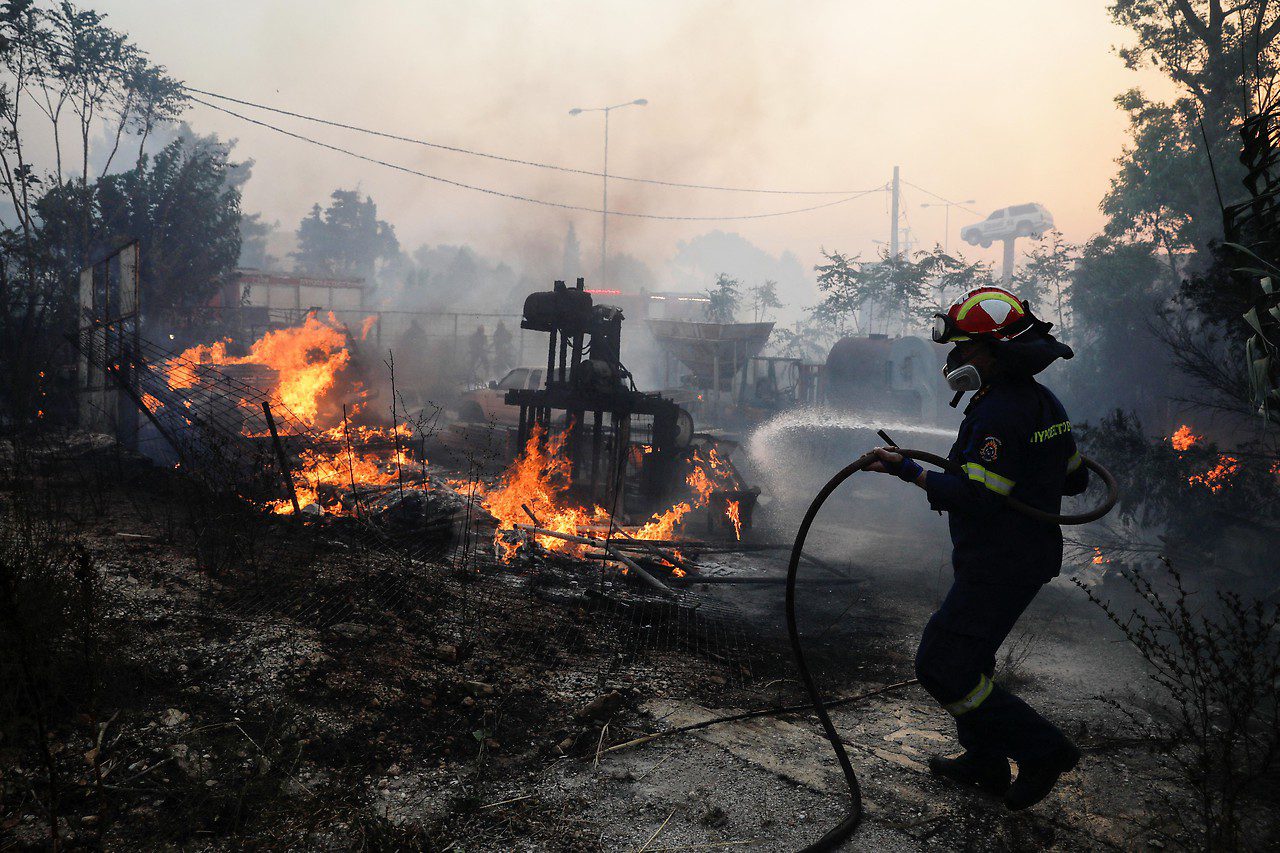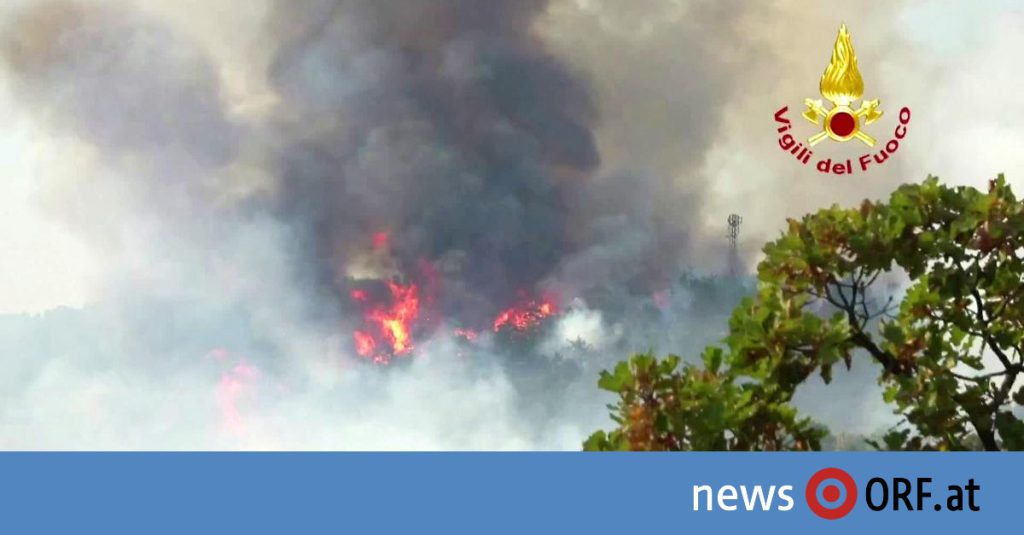Firefighting teams from Udine, Trieste, Gorizia and Slovenia are currently battling the main fire in the Friulian Karst region. And the emergency services were supported in fighting the fires with firefighting planes and helicopters, according to local media.
The flames are not under control yet. In Slovenia, the municipalities of Sella na Krasu, Hode Luj, Coretta na Krasu and Nova Vas were affected. Friulian authorities have called on residents to wear FFP2 masks near fire-affected areas.
The highway is partially closed
Motorway operator Autovie Venete ordered the closing of the A4 section between Redipuglia and Sistiana in the direction of Trieste on Tuesday, which remained in place on Wednesday. The staff at the Lysrt fee booth had to be brought to safety. In view of the traffic during the holidays, there are widespread traffic jams.

Rail traffic on the Venice – Trieste line was also suspended between Monfalcone and Duino Aurisina, and there was no access to Trieste station. Several train trips have been cancelled. An alternative bus service has been created. The railway company advised people in Friuli-Venezia Giulia not to travel.
Watch out for power outages in Trieste
The mayor of Trieste, Roberto Dipiazza, has warned of the danger of power outages due to the fire. This may also strain the water supply. Residents were asked not to use the elevators.
Because of the thick smoke that arose after a fire near the port of Monfalcone, a production plant belonging to Fincantieri Shipping had to be closed. The mayor of Monfalcone, Anna Maria Siscent, called on residents not to leave their apartments due to the heavy smoke and to keep windows closed.
Clouds of smoke over Grado
Meanwhile, thick clouds of smoke spread over Grado Resort. Two beaches were closed. A fire broke out in the nearby port city of Monfalcone. Called to use the FFP2 mask outdoors. In Gorizia, several hundred people have already had to be taken from their homes. 350 hectares of forest were destroyed in Italy and Slovenia.
Fires in Tuscany, also in Florence
A large fire also broke out in a forest near Lucca in Tuscany, where hundreds of people have already been taken to safety from the flames. A video clip from the night showed fires burning near a settlement and devouring trees. Regional President Eugenio Gianni said on Twitter on Wednesday that some gas tanks had exploded. Some aspects of the fire front may spread due to strong winds.
According to the fire brigade, there are more than 100 people on duty now. 4 firefighting planes and a helicopter to support the firefighting from the air. The mission has been going on since Sunday. Other fires have also been reported from other parts of Tuscany. In Florence, according to Mayor Dario Nardella, a fire broke out in an uninhabited area in a green area. Residents of the Tuscan capital should keep their windows closed.
Many affected countries
In addition to Italy, many other European countries are in the grip of fire and heat. Fires also continued to burn in Spain, Portugal, France, Germany and Greece. In Portugal, there were 25 larger and smaller fires on Wednesday, with more than 1,000 emergency services battling it out. Two fires in the communities of Chaves and Morca near the city of Porto were the biggest concern for firefighters. According to the information, more than 900 emergency services were active in these two fires alone. So far, three people have died and more than 200 have been injured during the firefighting operations.

With record temperatures of around 40 degrees, Germany is also battling forests and wildfires. Several people were injured. As police and firefighters have now announced, some of the wounded were taken to hospitals during firefighting operations in Baden-Württemberg and North Rhine-Westphalia, but there was no danger to life.
There is some relaxation on the French southern Atlantic coast, where only two major fires spread overnight. However, the fires are now also affecting other parts of the country, such as Brittany.
severe weather
Although individual extreme events cannot be directly traced to a specific cause, according to the Intergovernmental Panel on Climate Change, it is clear that extreme weather events such as floods, storms and heat are becoming more frequent and intense as a result of the climate crisis. This means that rainfall and storms are getting heavier, heat waves are getting hotter and drought is getting drier.
But in Greece, hundreds of firefighters are trying to prevent wildfires from spreading to the area around Athens. The fire destroyed many homes, which were repeatedly torched by storms. Authorities ordered the evacuation of at least 10 districts and one hospital.
intense heat wave
A severe heat wave has engulfed large parts of Europe since the beginning of the week. The hottest day ever recorded in the UK was on Tuesday. At the hotspot, London Heathrow, over 40 degrees were reported for the first time. Fires also broke out here, and 16 firefighters were injured during the firefighting work.
Severe damage from the heat wave
A heat wave in southwestern Europe is causing severe damage. Extreme temperatures are associated with persistent droughts and wildfires.
39.5 degrees were reached in Germany, and it is assumed that there will be similar temperatures in the east. Also in western France, maximum temperature values were recorded in 64 communities on Tuesday. Temperatures are now expected to reach 40 degrees in the east of the country. The 37-degree mark can also be reached in Austria on Wednesday – more on that at wetter.ORF.at.
new natural
Experts warn that due to the climate crisis, these heat waves are likely to be normal in the future. Heat waves are becoming more common, and this “negative trend” is likely to continue “at least into the 1960s,” WMO chief Petteri Taalas said in Geneva. “In the future, these heat waves will be normal, and we will see more extremes.”
“We are on a three-degree path,” Environment Minister Leonor Gosler (the Greens) warned in Berlin on Tuesday about global warming. In the Petersberg Climate Dialogue, German Foreign Minister Annallina Barbock warned that all countries must significantly accelerate their efforts to protect the climate.

“Food practitioner. Bacon guru. Infuriatingly humble zombie enthusiast. Total student.”








More Stories
Kyiv: Russian Kursk offensive halted
US Presidential Election: Former US Government Officials Warn Against Donald Trump's Election
Netherlands wants to leave asylum system